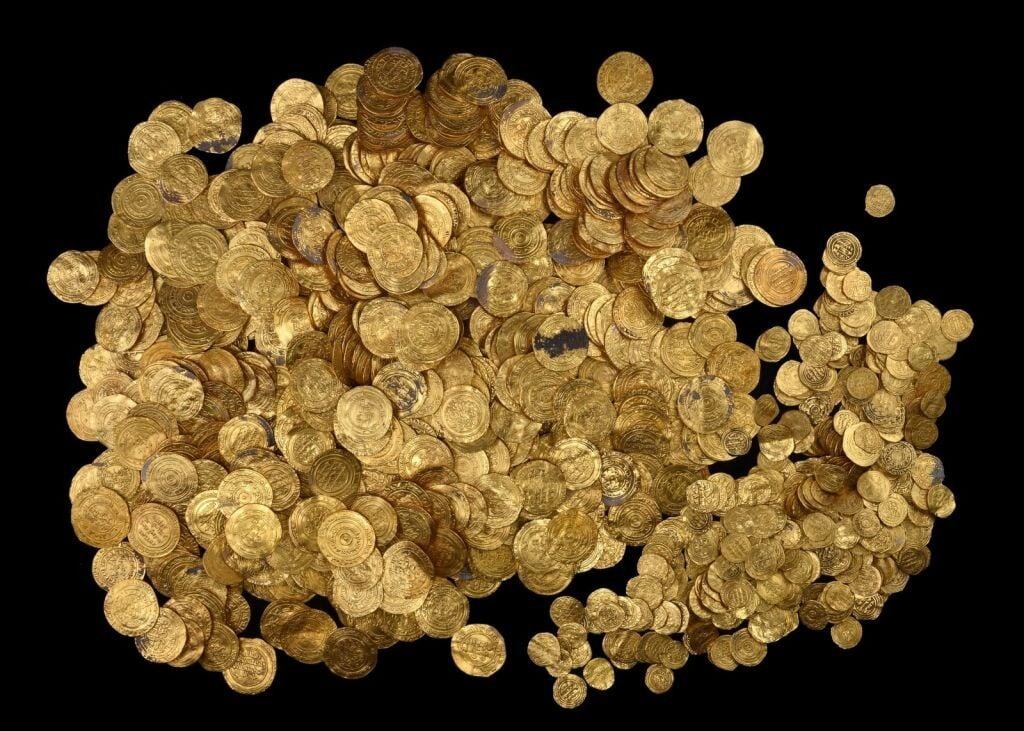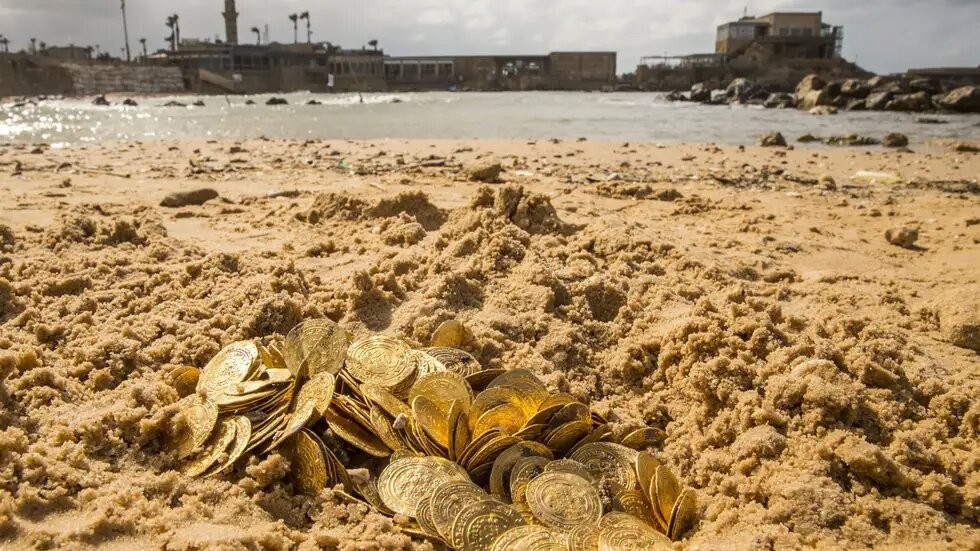Unbelievable Diver Find Off the Shores of Ancient Caesarea Reveals Israel's Biggest Gold Hoard Yet
February 2015, a group of Israeli divers were engaged in amateur diving off the coast of ancient Caesarea. At some point one of the divers noticed something shiny on the seabed. At first he thought that it was a bottle cap or a piece of metal reflecting sunlight. But when he decided to lift the observed item, it turned out that this was a gold coin with Arabic inscriptions. The man signaled the attention of his colleagues with signs and within a few minutes the divers were holding dozens of coins in their hands. Realizing that the find could have historical value, they acted wisely and did not collect everything from the seabed, but reported the find to the Israel Antiquities Authority. Already after a day, archaeologists arrived at the site, who conducted an underwater survey of the area. It turned out that on the seabed, not far from the ancient harbor, lay a true golden carpet: about two thousand coins scattered over an area of several tens of square meters. The weight of the hoard was about nine kilograms of pure gold. The coins were astonishingly well preserved, because gold, unlike silver or copper, is almost impervious to the effects of saltwater, so each coin looked almost the same as a thousand years ago. Interestingly, archaeologists noted bite marks on some coins—distinctive marks left by people testing the authenticity of the gold.

A Glittering Discovery on the Seabed Near Caesarea
February 2015, a group of Israeli divers were engaged in amateur diving off the coast of ancient Caesarea. At some point one of the divers noticed something shiny on the seabed. At first he thought that it was a bottle cap or a piece of metal reflecting sunlight. But when he decided to lift the observed item, it turned out that this was a gold coin with Arabic inscriptions. The man signaled the attention of his colleagues with signs, and within a few minutes the divers were holding dozens of coins in their hands. Realizing that the find could have historical value, they acted wisely and did not collect everything from the seabed, but reported the find to the Israel Antiquities Authority. Within a day, archaeologists arrived at the site, who conducted an underwater survey of the area. It turned out that on the seabed, not far from the ancient harbor, lay a true golden carpet: about two thousand coins scattered over an area of several tens of square meters. The hoard weighed roughly nine kilograms of pure gold. The coins were astonishingly well preserved, because gold, unlike silver or copper, is almost immune to the effects of saltwater, so each coin looked almost the same as a thousand years ago. Interestingly, archaeologists noted bite marks on some coins—distinctive notches left by people testing the gold's authenticity.

Fatimid Dinars Date the Hoard to the 11th Century
Laboratory analysis revealed that all the coins were Fatimid dinars, minted during the Fatimid Caliphate, a powerful Islamic state that existed from the 10th to the 12th century and stretched from North Africa to Syria. Among the found specimens were dinars from the reigns of Caliphs al-Hakim and al-Zahir, minted in the cities of Cairo and Palermo. This allowed dating the hoard to roughly the 11th century CE. Caesarea, where the hoard was found, was an important port on the eastern coast of the Mediterranean. The city was founded by King Herod the Great in the 1st century BCE and served as a key hub between East and West. Under the Fatimids Caesarea remained a bustling trading center, where ships with cargos of spices, textiles, metals and precious goods arrived. Most likely the gold coins formed part of the cargo of one of these trading ships. The vessel could have sunk during a storm, or perhaps fallen victim to pirate attack — both scenarios for that era were quite realistic. However, archaeologists do not exclude another version. Perhaps the gold belonged to the caliphate treasury and was being transported to pay soldiers or settle taxes. The loss of such a sum could have been a sensitive blow to the authorities, but a thousand years later this tragedy turned into a real gift for science. The discovery of the hoard in Caesarea became a sensation. Israeli media reported on it on the front pages, and the Antiquities Authority called the find 'priceless' and 'unique'. Never before in the waters of the country had such a quantity of gold been found, and from such an early period. For historians and numismatists this hoard proved to be a real treasure of information, because the coins allow tracing of trade routes, economic links, and even political fluctuations within the Caliphate. There are more interesting finds on my Telegram.

